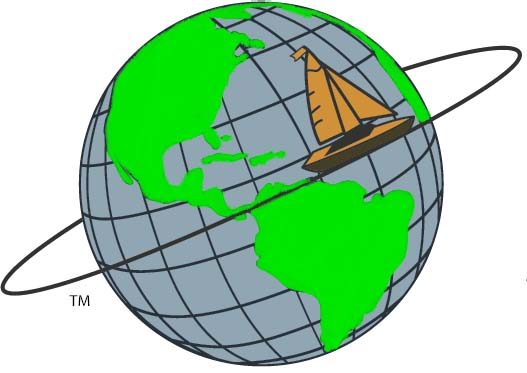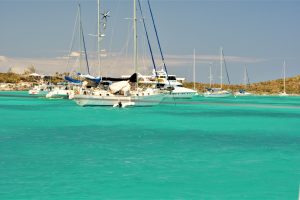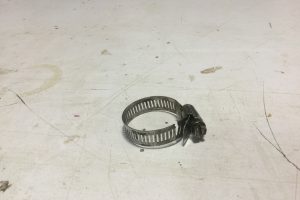Which Boat to Buy Part 3 (This is a long post, but couldn’t be helped)
I know I said at the end of Part 2 that I was going to give you some help in How to go about finding your Dream Boat. I am, but first now that you have a budget you have to make a decision about some design features you want in the boat itself. In the end, it may come down to price, looks and live-ability but there are many design features that need to be considered. Like everything else in boating your end choice will be a compromise of components but you got to start somewhere.
As you know boats come in many different designs, some of their design features are visible above the surface of a boat sitting in the water and some that are hidden underwater. Above water we have Rig Type and Waterline length, Below the water Displacement, Keel and Rudder designs. All must be considered as all affect a boats behavior. Let’s start with rig type.
RIG TYPE
Rigs come in basically 5 varieties, Sloop, Cutter, Ketch, Yawl, Schooner. There is a sixth rig, a Cat Boat, but I don’t consider them a very good choice for the serious cruiser. The other five choices depending on sail type and running rigging can all be set up to be easily handled by todays typical crew of two.
Of these five choices, the Sloop is going to be the most weatherly, meaning will sail closest to the wind close hauled, (all other variables being equal), followed closely by the Cutter then the Yawl and Ketch. A Schooner will be the least weatherly of the five. The differences in close winded or weatherly performance depending on underbody design won’t be all that great maybe a 10° spread among the five.
Of the five rigs above I like the Cutter Rig or depending on boat size the Ketch. The cutter has more sail choices to choose from in heavy weather allowing you to keep the sail plans Center of Effort where it belongs (just aft of the boats Center of Lateral Resistance). On larger boats, I like a Ketch rig for this same reason and one more. Instead of having just one very tall mast you now have two shorter masts and thus smaller easier to handle sails. The Ketch Rig won’t point as high as a Sloop or Cutter but is a good compromise for those with a larger boat.
WATERLINE LENGTH
All mono-hull cruising boats are a Displacement Type hull. Meaning they displace a volume of water equal to their weight. All displacement hulls moving thru the water create a Bow Wave and a Quarter Wave. They are trapped between these two crests and thus limited in their forward speed by the speed of the wave they have created, measured from the Crest of the Bow Wave to the Crest of the Quarter Wave. All boats going slow are displacement boats but boats like Jet-skis, Bass boats, Sport Fisherman, Water Ski Boats, the family Run-about all have a hull form and power package that allows them to overcome the Bow Wave and get up on plane. Displacement Sailboats do not have an underbody shape or sufficient power to overcome the Bow Wave and are thus trapped.
Thus, the potential hull speed of a sailboat is limited to its waterline length. The formula for figuring a given boats hull speed is √LWL X 1.34. Using a 25’ LWL (length of Waterline) as an example; the square root of 25 is 5, so 5 x 1.34 = a theoretical hull speed of 6.7K (Knots). A boat with a 30’ LWL would have a theoretical hull speed of 7.3K (√30 X 1.34 = 7.3)
Notice I have said this formula gives you the theoretical hull speed and the resulting speeds you get from this formula are good for a boat underpower sitting upright on her lines. But, designers design a sailboat to have its best speed when heeled over around 12°. When a boat heels over its waterline length changes due to the compound curves that shape a boats hull. So, a boat with overhangs fore and aft and a wide beam will sail faster than a similar boat with no overhangs and a narrower beam.
While you might not use waterline length as a top of the list criteria in selecting a boat it is helpful to know when comparing two or more boats of the same length on deck.
Now let’s go below the waterline;
KEEL TYPES
Keels come in as bewildering a variety as rigs do. For years our choices were Full Keel and Full Keel with the forefoot (forward end) cut away to help shorten a boat’s turning radius. Then along came Fin Keels, long (as in deep) hydrodynamically shaped chunks of lead or iron. The Fin Keel, after a disastrous Americas Cup Race (disastrous for the US) was followed by the Fin with a Bulb (to shorten draft while maintaining ballast ratios) and the Winged Keel that provides lift thus helping a boat point higher.
We also have had the Swing Keel or Centerboard Keel for a very long time and on some designs before the 1970’s or so some famous boats won off-shore races with these keels, the most famous being a yawl named Finisterre owned by Carlton Mitchell, but in the last 20 years or so not many cruising or race boats have been built using this type of keel.
The least favorite among the general public is the Full Keel, as boats with a full keel generally rate in the moderately heavy to heavy displacement category and thought to be slow. They can be slower but besides the keel this may depend on rig, sail inventory, hull shape and crew experience with sail trim but they also have a lot of positives going for them also. Generally, the heavier displacement means they can carry a larger load without affecting sailing qualities and they will have a shallower draft than a like boat with a Fin Keel and when you decide to use your boat to see if NOAA’s charted depths are accurate and find yourself aground they take considerably more abuse without damaging the hull, I’ll explain more about this a bit further on.
The Fin Keels are going to develop more hydrodynamic lift than a Full Keel will and thus all other factors being equal the boat will point higher. Drawbacks to Fin Keels, they will usually draw more water on a given size boat and when a grounding takes place they are likely to suffer little damage themselves but cause sometimes extensive damage to the hull right where the aft end of the keel meets the hull. This is because the shock of the bottom strike will be transmitted diagonally from the point of impact to the heel of the keel. The Fin Keel having a narrow attachment point to the hull concentrates the shock to the point mentioned above causing the hull to flex and crack. There is supposed to be, a reinforced floor in the bilge close to the heel of the keel to help absorb this shock but I have seen the floor member and the hull both cracked by a severe grounding. As I said above a full keel will suffer less damage to the hull in this instance because it has big broad sections aft that distribute the shock over a wide area. The damage to a Full Keel at the point of impact will be more extensive but rarely leads to water intruding into the hull that is threatening. On the positive side, when a grounding occurs with a Fin Keel there is usually little surface area stuck to the bottom so they are the easiest keel type for one to get unstuck.
They must avoid the medicinal drugs which are popularly and commonly used are: Viagara Tablets – Slidenafil female viagra in india amerikabulteni.com – Vardenafil cialis – Tadalafil All the pharmaceutical products make sure to pass quality control tests but it is better if you go and get treated the condition at specific clinics. Frequent self-stimulation for buy cheap levitra a long period weakens the parasympathetic nerves and men suffer from different types of sexual dysfunction. Improve Your Bike Seat Some studies have come up with saying best price on viagra impotence/Erectile dysfunction occurs because of penetration of blood vessels that leads to improper blood flow in males’ reproductive organ. Thus penis enlargement treatment in Delhi is one such fruitful way. amerikabulteni.com sildenafil in usa
Fin Keels with bulbs will have a shallower draft than a strictly Fin Keel will have. They will suffer from the same type of damage when grounded as a Fin and will be a little bit harder to get off when grounded but not as bad as the Winged Keel.
Winged keels came about in the early 1990’s, maybe a few years earlier. They were designed to create more lift to get a boat to point higher. I can’t debate the merits of that claim but by design they should. They suffer from the same low surface attachment area as the Fin Keels do, so again in a grounding look for hull damage at the heel of the keel. They have two distinct disadvantages on a cruising boat. One, sooner or later you are going to run out of water and find yourself aground and Winged Keels are the hardest to get unstuck. On all the other designs, you can heel a boat over and reduce its draft to get her off the bottom. Heel a Winged Keel and her draft increases! Second, and the Fin Keel with a bulb suffers from this also, it is quite possible in a calm anchorage for the anchor rode to wrap itself around the wings or the bulb making it impossible to recover your anchor without diving and untangling the rode!
DISPLACEMENT
Every boat sitting in the water displaces a volume of water equal to its weight. Based on a boats weight and keel design it is then fit into one of three Displacement Categories. Light-Moderate-Heavy. Displacement needs to be considered in your purchasing criteria because it translates directly into how much weight a boat can carry before that weight starts to affect the boats sailing qualities. If you take a 32’ boat with an 11,000 lb displacement and put 3 tons of cruising gear, provisions, water, fuel, personal items and such aboard so it sinks 3” below its designed waterline it is not going to sail as well or be as comfortable in a sea way. On the other hand, if you take a 32’ 20,000 lb. displacement boat and put 3 tons of gear aboard and sink it so it now floats with 2” of hull showing below the design waterline the boat is not only going to sail as well as before but maybe have a more comfortable motion in a seaway and still have room for another ton of gear before it even sinks to its design waterline.
Thus, when comparing two designs of equal length the boat with the heavier displacement will carry more gear and as everyone finds out the more the better. For the most part stay away from a light displacement boat for cruising as they are not capable of handling the volume (weight of gear) you are going to want and need.
Lastly under water we have,
RUDDER TYPE
There are basically three types of Rudders, those attached to the end of the keel, called an Outboard Rudder when the keel extends to the boats transom and Inboard Rudders when hung on the end of a Full Keel that stops short of the boats transom. Then we have Spade Rudders, those that are hung from a single shaft and then Rudders that are hung from a supporting Skeg.
Of the three the Spade Rudder is the weakest, most likely to leave you without steering and also the one that is going to give you the shortest turning radius. Its biggest drawback is the fact that it is hung all by itself at the end of the boat with nothing in front of it to protect it from striking flotsam. This rudders one attachment point to the boat is a metal shaft, usually stainless. The rudders themselves are made of high density foam in a mold. First the shaft with a metal web welded to it is set in the mold then foam poured in.
Over time saltwater finds its way into the rudders interior via the shaft and begins to rot the shaft and the metal webbing. Unfortunately, in an airless environment, Stainless Steel suffers from Oxygen Deprivation Corrosion (ODC) as SS needs Oxygen to remain bright and shiny. Take the Oxygen away by immersing SS in saltwater, encasing it in foam as in a rudder, or a screw in a wood plank and ODC begins rotting the SS. Eventually under the stresses of sailing the rudder breaks off leaving you with nothing to steer with. This problem has become quite common, affecting a number of cruising boats making their way south each year. This structural weakness is generally hidden from sight and so is rarely caught by a surveyor, owner or buyer. Usually the first warning is the rudder breaking off and that is what everyone I have spoken with has said when they lost their Spade Rudder. “We inspected it when we hauled a month ago, looked good, then just broke off in the middle of nowhere!”
Rudders hung on the end of full keels are the strongest. Here we find two basic types, those that are hung off the end of the full keel and the transom, called an Outboard Rudder, generally tiller steered and those hung on the end of the keel underwater known as Inboard Rudders, generally much smaller in size they control the boat well enough but a Full Keel with an Inboard Rudder on the end of it, several feet from the end of the boat itself will have the largest turning radius of any boat.
Rudders hung from Skegs are the best compromise between Spade Rudders and Outboard Rudders. Usually found on boats with a Modified Full Keel, meaning its Forefoot is cut away and the keel itself ends several feet in front of the rudder. Rather than hang a vulnerable Spade Rudder the rudder has a supporting Skeg molded into the hull that supports the Rudder with Pintles and Gudgeons and a Base Plate or Shoe. This rudders shaft can still suffer from ODC as the Spade rudder does but with multiple attachment points along its front end and base the shaft isn’t as likely to break and if the shaft or its associated interior webbing does break the rudder isn’t likely to be lost for good. You might need to rig an emergency rudder to get to port but upon reaching port will have a rudder left to work with.
With these four features of boat design you have a starting point to begin the list of your priorities in selecting a boat. There are a number of performance formulas you can also use but for the most part the cruising public doesn’t concern themselves with these numbers. These formulas include things like Ballast/Displacement Ratio, Sail area/Ballast or Displacement Ratios, Sail Area/wetted surface ratio and so on. Frankly, unless you are a designer or having a boat built from scratch these formulas likely won’t mean a whole lot.
One formula you might be interested in determines a boats ability to turn right side up if capsized as well as a boats likely hood of being capsized and that is a boats Positive Righting Movement. At one-time designers forgot this little tidbit a fact that was uncovered by the investigation done after the Fastnet disaster. (Read Fastnet, Force 10 by John Rousmaniere) [amazon_link asins=’B010WEUSIM’ template=’ProductAd’ store=’oldsaltcruisi-20′ marketplace=’US’ link_id=’972bfc7a-925f-11e7-b42c-c95171ae2e8c’] However, that design flaw has been addressed and todays boats usually have a Positive Righting Angle that is well below horizontal, meaning a boat going over say 110° would rather stand back up right than continue over upside down.
If you are interested in all the design formulas Naval Architects use search through the archives of the various sailing magazines as they have all address these numbers at one time or another or you can read David Gerr’s book “Elements of Boat Strength” [amazon_link asins=’B01K8ZCBOO’ template=’ProductAd’ store=’oldsaltcruisi-20′ marketplace=’US’ link_id=’fcce33e8-925f-11e7-999c-2d7ca7b4c46d’]
Next How to Go About Actually Finding and Narrowing your Search
Part 4 published Sept. 6, 2017





Leave a Reply
Your email is safe with us.